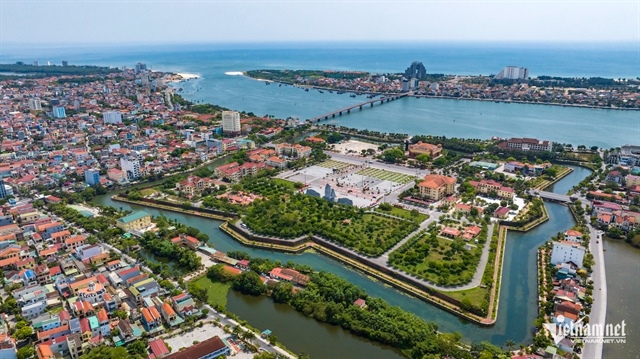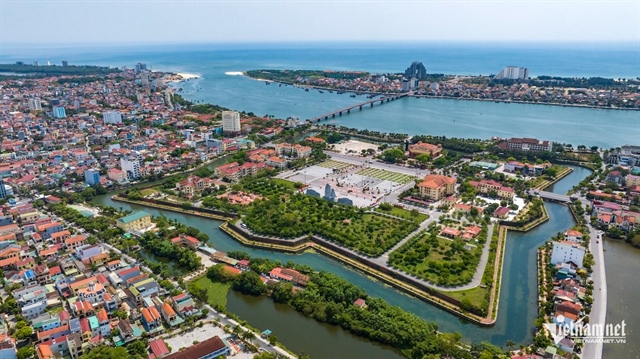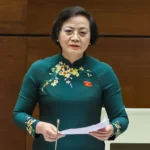The Draft Amendment Committee to supplement several provisions of the 2013 Constitution (the Committee) has just released a report explaining and synthesizing feedback from the people, sectors, levels, and National Assembly deputies on the draft resolution amending and supplementing several provisions of the 2013 Constitution.
According to statistics, as of June 5, there have been over 280 million contributions from agencies, organizations, and individuals on all contents and clauses in the draft resolution.
The vast majority of opinions (99.75%) agreed with the necessity to amend and supplement several provisions of the 2013 Constitution. They also agreed with the scope of amendment and supplementation and the basic content of the draft Resolution amending and supplementing several provisions of the 2013 Constitution as mentioned in the Committee’s proposal.

A corner of Dong Hoi City. Photo: Hoang Ha |
Regarding the organization of administrative units stipulated in Article 110 of the 2013 Constitution, the majority of opinions (99.83%) agreed with the amendment and supplementation to implement the policy on the two-level local government.
Some opinions suggested that Clause 1 of Article 110 should specifically regulate the administrative units below the provincial and central city level, including communes, wards, and special districts.
The Committee stated that the use of the phrase “administrative units below the provincial and central city level” is to ensure consistency with other provisions of the Constitution. The specific types of administrative units under the provincial and city level will be stipulated in the Law on Local Government Organization.
According to the Committee, the history of the four previous comprehensive amendments and supplements to the Constitution showed that the provisions on the organization of administrative units were amended and supplemented each time due to new development requirements. This is because the provisions in the Constitutions were too detailed in naming each type of administrative unit.
Therefore, the general regulations in the current draft will ensure long-term stability and provide a basis for the future. In the future, if there are requirements for the formation of new types of administrative units, frequent amendments and supplements will not be necessary.
Not retaining cities and towns under the province ensures the voice and interests of residents
Some opinions suggested diversifying the forms of administrative units below the provincial and central city level. They proposed considering retaining the current cities and towns and defining them as basic administrative units without necessarily dividing them into subordinate wards to ensure urban management, development, and rational resource allocation.
Regarding this issue, the Committee emphasized that the specific determination of administrative units below the provincial and central city level would be regulated by the National Assembly in laws to suit the practical situation of each period.
The explanatory report clarifies that, in the current period, determining communes as administrative units in rural areas, wards as administrative units in urban areas, and special districts as administrative units on some important archipelagos – formed according to population size, natural area, geographical conditions, demographics, and socio-economic development requirements – ensures national defense and security.
As reflected in the draft Law on Amendments to the Law on Local Government Organization, this is in line with the resolutions, conclusions, and directives of the Party in the past time. A two-level local government organized in conjunction with administrative units according to this model will ensure a streamlined apparatus, reduce intermediate layers, improve management effectiveness, save costs and state budget, bring the government closer to the people, directly address civil issues, and directly address urban, rural, and island management issues in a substantive, effective, and accountable manner.
This is also a step in rearranging administrative units to ensure their true nature and clearly separate urban and rural areas. It provides a basis for applying appropriate mechanisms and policies for each type and requirement of urban sustainable development. Organizing urban administrative units uniformly as wards will contribute to a unified management model, facilitating planning and regional linkage.
At the same time, organizing according to this model will also better ensure the people’s right to mastery and ensure that the voices and interests of residents in small towns are also considered and not overshadowed by larger cities within the same provincial-level administrative unit.

Provincial-level cities will cease to exist when district-level activities end |
The Vinh
– 09:26 13/06/2025





















